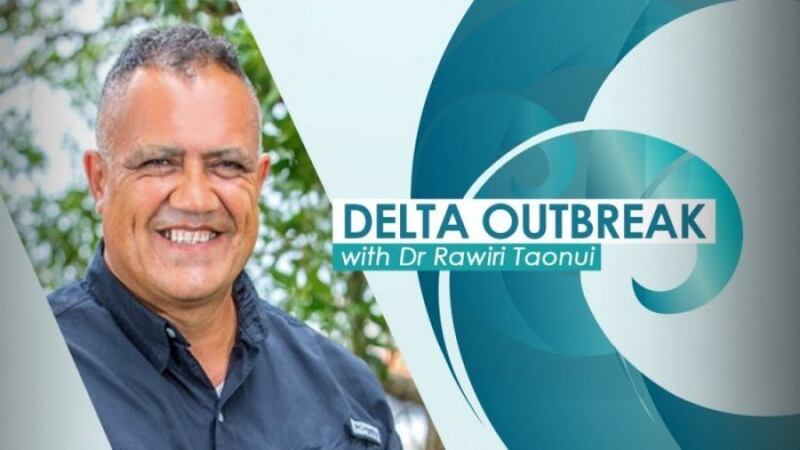"The numbers are worrying," writes health researcher Dr Rawiri Taonui on new projections of Covid-19 cases, hospitalisations and deaths up till November 3. “Māori communities need to prepare and must vaccinate," he says.
Māori are 47.4% of all new cases from the last five days.
- If Delta cases increase at an average rate of 40% each week, it's likely there will be up to 1,728 new cases by November 2. Around 800 will be Māori and comprise 36% of all cases.
- Six Maori have died of Covid-19 since 2020 but another 10 Māori will die if the above scenario eventuates. More deaths will follow if the health system is overwhelmed.
- The potential increase of Maori Delta cases will be higher and faster during November. Toward the end of October, Delta also has the potential to begin growing exponentially, with numbers outstripping this projection.
Increase in Māori cases
On Sunday, the Ministry of Health announced 60 new cases, the highest number since September 1. Of these, 30 (50%) were Māori.
Māori were 5% of Delta outbreak cases (39 of 687) on September 1. They are now 24% of all cases and 44% of all cases in managed isolation and quarantine.
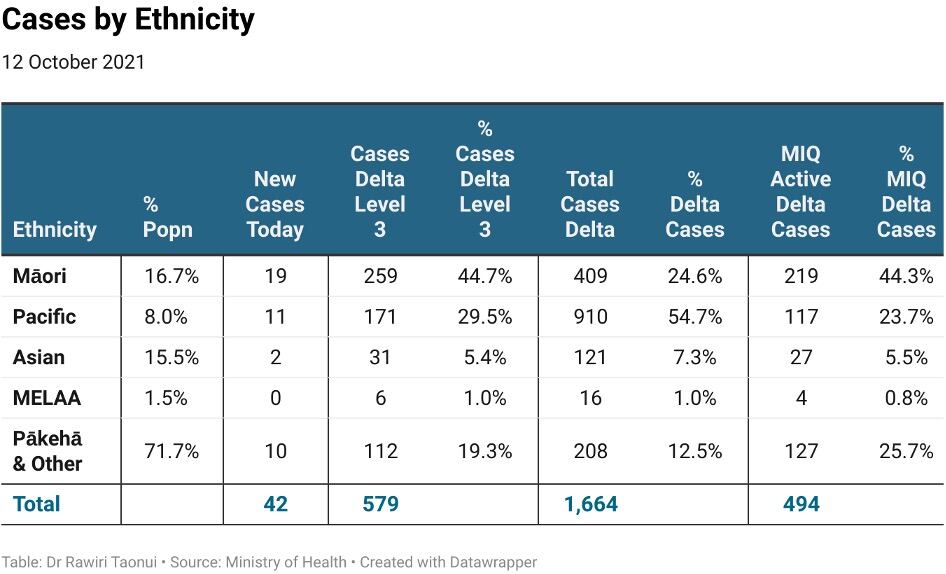
- A major concern is the rapid rise in Māori cases since Auckland moved to Level 3 on September 22.
- Māori make up 44% of all new cases at Level 3 and have passed and now outnumber the combined total of cases for the Pākehā, Asian and MELAA (Middle Eastern, Latin American, and African) communities.
- The rise includes a second alarming surge in Māori cases that began on September 29. Māori make up 46.3% of cases since the surge with the highest number of daily cases – 13 times in the last 14 days.
- This upward trend looks to worsen as Māori are 47% of all new cases over the last five days.
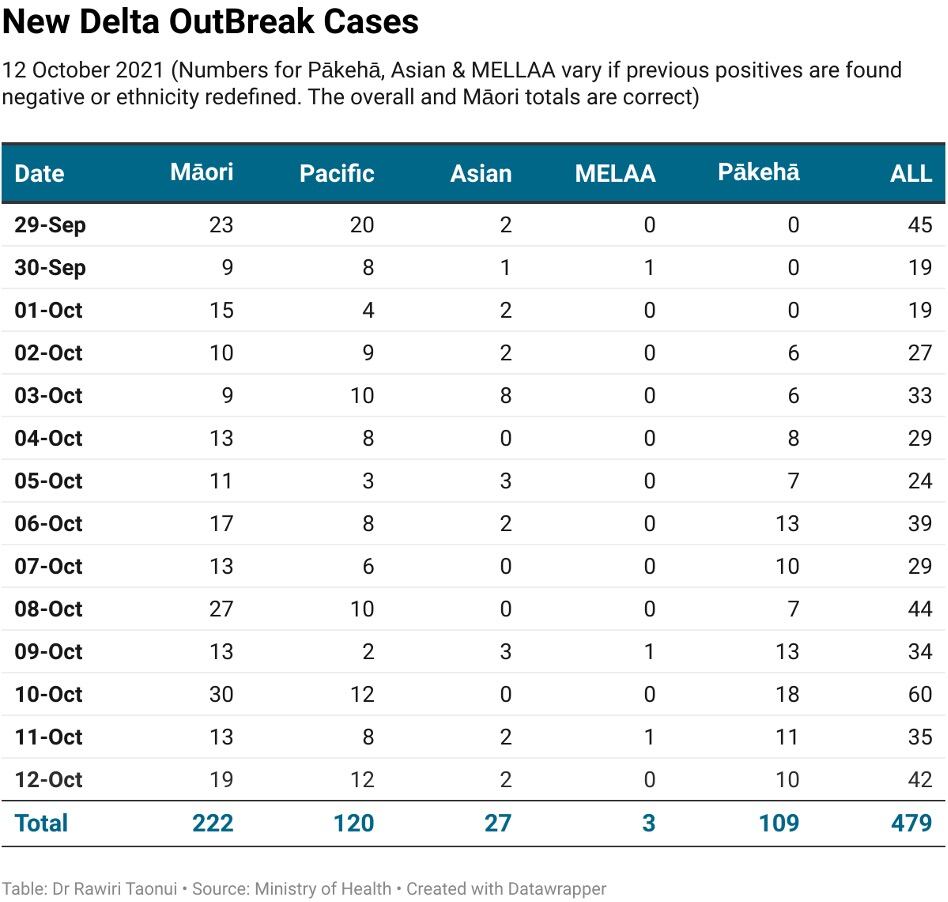
The table below tracks the first eight weeks of the Delta outbreak including the percentage increase or decrease in the average number of daily cases.
The current figures shows an increase of 44.4% over the previous week.
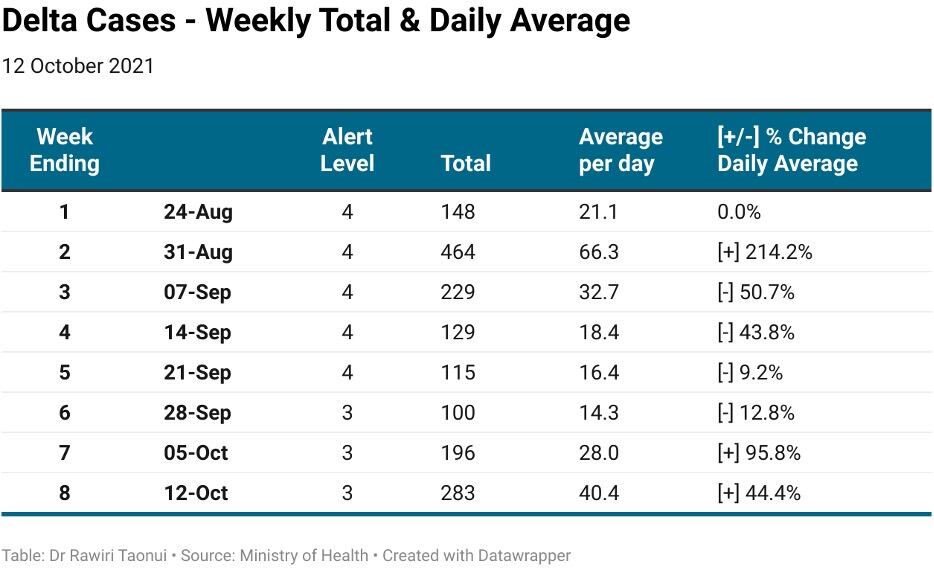
Using this figure as a mid-range indicator, the table below projects the number of new Delta cases to November 2 (the end of the 11th week of the outbreak) at rates of 30%, 40%, 50% and 60% per week month to cover a continuation, decrease, rise or high increase in new cases.
The calculation of the number of new Māori cases uses the 47.4% last five-day rate. Although there is every indication this may increase, the projection does not factor this in. One, to avoid an over-extrapolation of the numbers, and two, because over the last four days Pākehā have for the first time been the second-highest number of cases. This rise has other implications should Pākehā cases jump further.
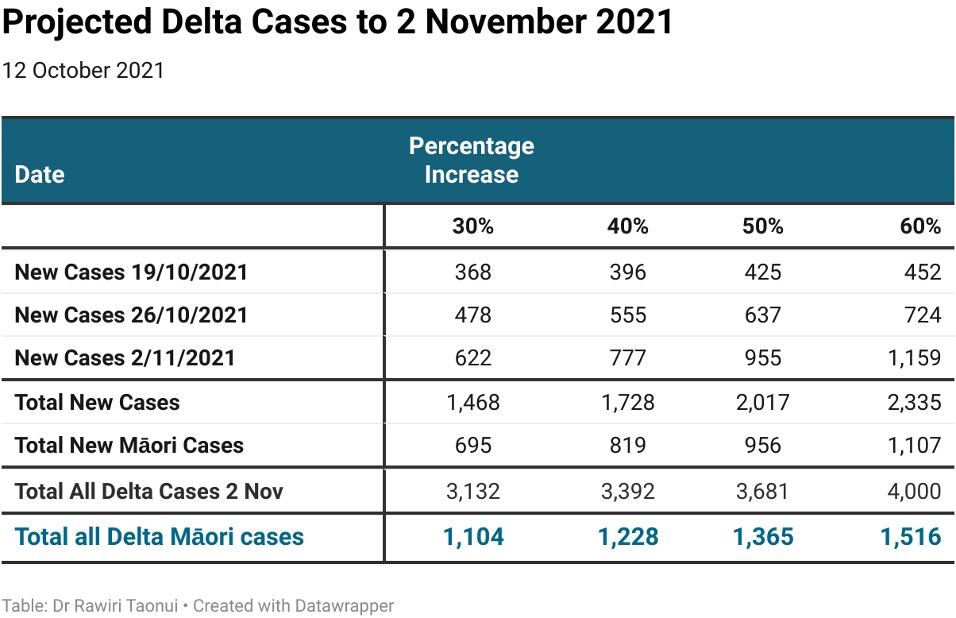
Summary
Māori communities need to prepare and must vaccinate.
If Delta cases increase at an average rate of 30% to 40% each week, it’s likely there will be 1,468 to 1,728 new cases by 2 November. Between 695 and 819 will be Māori and comprise 36% of all cases.
If Delta increases at an average rate of 50% to 60% per week, the likelihood increases for 2,017 to 2,335 new cases by 2 November. Between 956 and 1,107 will be Māori, comprising 38% of all cases.
If the above scenarios eventuate, between seven and 11 Māori will die, more if cases overwhelm the health system.
If there is an increase to the current 47.4% five-day average of Māori cases, which looks possible, then the overall Māori numbers, percentage proportion and deaths will also increase.
Should this happen, the potential increase will be higher and faster during November. Toward the end of October, Delta also has the potential to begin growing exponentially with numbers outstripping this projection.
Kia hamaru te noho | Stay safe.
Dr Rawiri Taonui

